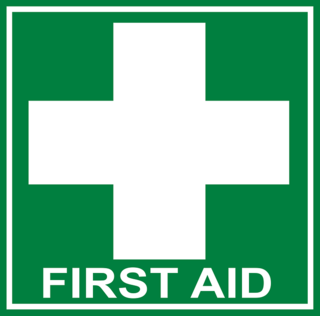Stress
Advanced Psychological First Aid (PFA)
More techniques to help you assist family, friends, and others in distress.
Posted January 19, 2019 Reviewed by Ekua Hagan

This is the second in a series of three discussions of psychological first aid (PFA). Previously (see Psychological First Aid, Oct. 9, 2018), I introduced readers to the concept of psychological first aid (PFA) as a means of assisting friends, family, co-workers, and even complete strangers who might be in an acute state of distress or crisis. It can also be thought of as a means of fostering resilience in others.
To review, PFA may be simply defined as a supportive and compassionate presence designed to do three things: 1) stabilize (prevent the stress from worsening) 2) mitigate (de-escalate and dampen) acute distress 3) facilitate access to continued supportive care, if necessary.
The Institute of Medicine wrote “In the past decade, there has been a growing movement in the world to develop a concept similar to physical first aid for coping with stressful and traumatic events in life. This strategy has been known by a number of names but is most commonly referred to as psychological first aid (PFA)” (IOM, 2003, p.4). Similarly, according to one of the early writers in the field of psychological crisis intervention, “a little help, rationally directed and purposely focused at a strategic time, is more effective than extensive help given at a period of less emotional accessibility” (Rapoport 1965, p. 30).
The good news is that help can be effectively provided by a friend, co-worker, teacher, coach, supervisor, or family member, especially a parent, if certain simple “first aid” guidelines are followed.
In the initial discussion, I reviewed the “basics” of PFA and focused on the first goal in the PFA process, “stabilization” (preventing the stress from worsening), by addressing three ways in which the helping conversation might be initiated and further described 15 specific “Dos and Don’ts.” These recommendations were based largely upon the Johns Hopkins’ model of psychological first aid referred to as RAPID PFA (Everly & Lating, 2017).
If all you do is follow those simple guidelines previously described, we believe your efforts would be of assistance in most crisis situations. That said, I would like to continue the discussion by now reviewing “advanced” PFA, more specifically, how you might be even more effective by focusing on the second goal of PFA: mitigating (de-escalating and dampening) acute distress.

De-Escalating (Mitigating) a Stress Reaction
So how do you actually reduce acute distress in the moment? The majority of extant models of PFA rely upon interpersonal connection as the “active ingredient” in the psychological first aid process. A distinguishing feature of the Johns Hopkins’ approach to PFA is the inclusion of more active interventions designed to achieve the goal of stress mitigation in addition to the initial goal of stabilizing the person’s stress reaction. Research has shown that while connecting with a compassionate presence and allowing a person in crisis to voluntarily “vent” can be helpful, there appears to be an added benefit to an intervention which employs "active ingredients" designed to rather quickly reduce arousal and acute distress such as those listed below (see Everly & Lating, 2018, for a review).
10 Things You Can Do to Reduce Acute Distress in Another Person

Listed below are 10 interventions that have shown their effectiveness through research or which have been listed as potentially helpful by a variety of credible sources. It is important to note that all of these interventions are predicated upon first, establishing a supportive and compassionate presence — otherwise, they are likely to be seen as dismissive, aggressive, or otherwise counterproductive and, second, asking if there is something specific that you can do in that moment to assist.
1. Perspective-taking, that is, attempting to see the world through the eyes of the other person, can be helpful in making that initial connection and fostering ventilation. It can even be taught to children (see Everly, Brelesky, and Everly, 2018).

2. Project a sense of calm. If you are able to project a sense of calm and reasonable assuredness, it is likely to result in a lowered state of arousal in the other person. Similarly, it serves to reassure the other person that things are not as bad as they may seem.
3. Normalize, if appropriate, the reactions the person in distress is experiencing. Psychological distress and feeling out of control can be very scary. That fear alone can create a crisis state and further feed the acute crisis. It’s “normal” to feel emptiness after a loss. It’s “normal” to have a fear of the unknown after a divorce, loss of employment, or a threatening medical diagnosis. Sometimes just hearing that helps.
4. Inform or explain as best you can why certain situations exist or why certain reactions are occurring. If appropriate, suggest the person access a higher authority on matters relevant to the crisis. Healthcare professionals, attorneys, financial experts, clergy, or other subject matter experts can be useful in de-escalating acute distress. Even the suggestion alone of reaching out to such experts can help the immediate crisis as it signals a sense of hope.
5. Educate or explain, as appropriate, things the person might anticipate in the future concerning the immediate crisis. Pasteur once said, “Chance favors the prepared mind.”
6. Do not hesitate to correct any misunderstandings or false information to which the person in crisis might be reacting.
7. If there are any simple stress management techniques you think might be useful in the moment or later on, they might be suggested. Most acutely, we know controlled breathing can help people in distress reduce the chance of a panic attack and regain a sense of control. Recommendations regarding caffeine use, sleep hygiene, and exercise may be relevant in certain situations. It’s important to familiarize yourself with such techniques prior to making any such suggestions.
8. “Reframe” the problem and/or the reaction to the problem. Research has shown this to be a potentially powerful intervention. Without trying to “fix” the problem or being dismissive, determine if there any other ways to a) reinterpret the problem, b) reinterpret or diffuse responsibility for the problem or c) reinterpret reactions to the problem. Many problems actually create new opportunities that are hard to see through a lens of distress. People consumed with guilt usually fail to consider a myriad of contributing factors and accept complete responsibility for things for which they are seldom completely responsible. This technique is called raising reasonable doubt. And remember, the stress reaction itself actually better prepares the body to handle a challenge, as long as it can be harnessed constructively.
9. Most authorities agree one of the most important interventions in a crisis is to establish a future orientation and a sense of hope. Depression, anxiety, suicidal, and even homicidal reactions are often based on a lack of hope in the future.
10. When all else fails as you try to de-escalate an acute stress reaction, suggest delaying any life-changing or impulsive actions. Impulsive remedies seldom end constructively. With time, the light of day, and equanimity, the severity of problems and their resultant distress decline.
© 2019, George S. Everly., Jr., Ph.D.
References
Everly, G.S., Jr., Brelesky, G., & Everly, A.N. (2018). Rodney makes a friend. Severna Park, MD: RSI
Everly, G.S., Jr., & Lating, J.M. (2017). Johns Hopkins guide to psychological first aid. Baltimore: Johns Hopkins Press.
Institute of Medicine. (2003). Preparing for the psychological consequences of terrorism: A public health strategy. Washington, DC: National Academy of Sciences.
Rapoport, L. (1965). The state of crisis. In H. Parad (Ed.), Crisis intervention: Selected readings (pp. 30-38). New York, NY: Family Service Association of America.




